













® NOV/DEC 2022 © Copyright 2022 American Trade Magazines All rights reserved. ■ BUILDING A ROUTE BUSINESS ■ MARKETING OUT OF YOUR POINT-OF-SALE SYSTEM Promoting and Training Employees Finding Those Ready for the Next Step
As one of the nation’s largest route fleets its necessary for our company to have world class technology in both the delivery truck & in our retail locations. Our management team relies exclusively on Spot’s Delivery Connect Mobile to verify that our drivers are delivering the right orders to the proper doorstep and our commissioned drivers love that they are able to communicate via text (SMS) to our guests real time through the application. I couldn’t be more happy with the suite of Spot’s
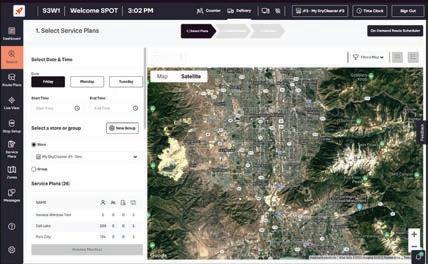



being used in

features
our delivery operation.
“
Delivery ConnectSophisticated routing made simple. Follow us: @xplorspot https://www.xplortechnologies.com/us/products/dry-cleaning-software Austrialia / NZ +1 (801) 208-2212 sales@spotpos.com North America (HQ) (801) 208-2212 sales@spotpos.com Europe / Middle East / Asia +44 1628 777774 info@spoteurope.com Schedule customer visits Control your zones and when you service View satellite views of live truck locations Review pictures of order deliveries today or in the past Create manifests across multiple service plans and stores Review pictures of pickup and delivery locations Integrates with both Zubie for vehicle tracking and Route4me for routing optimization Works directly with Delivery Connect Mobile
Kyle N.


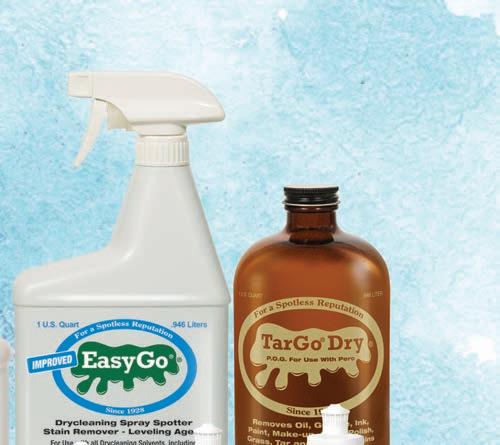



















drycleaner
Nov./Dec. 2022
Vol. 89, No. 8
FEATURES
Promoting and Training Employees
Who’s ready for more responsibility at your company, and how can you set them up for the best results? Answering these questions correctly can lead to success for both them and you!


Building a Route Business
Dry cleaners with route systems can provide their customers with two things they most crave: time and convenience. We examine how to set up successful routes — and highlight mistakes to avoid.
Marketing Out of Your Point-of-Sale System
Today’s dry cleaners have all the tools at their fingertips to reach their most valuable customers — the ones already doing business with them. We look at ways to keep them coming back and building stronger relationships.







NOV/DEC 2022
Promoting and Employees Finding for
HUNG UP ON THE HIDDEN HANGER?
If you need a little help finding this month’s hanger hidden on our cover, here’s a clue. Good luck!
2 American Drycleaner, November/December 2022 www.americandrycleaner.com
AMERICAN AMERICAN
12
(Photo: iStock.com/peshkov)
6
19



Help Clean up Your Operations Your All-in-One Solution for Dry-Cleaning Management Local Customer Service Customizable Reports Routes Racking Anti-Theft Employee Management More than Just Point of Sale Clean Notify Customer Messaging Order Ready Notifications Pick up and Delivery Reminders Paperless Invoicing Options Manager Updates We can help you save money across your dry-cleaning business 800.406.9649 sales@cleanerbusiness.com cleanerbusiness.com Ask us how to save money on credit card processing fees!
Facing the Future
Mark Twain once wrote that, “To stand still is to fall behind,” and that quote has never been truer than it is today. Dry cleaners who get stuck in the everyday tasks and don’t set their companies up to grow and better meet their customer’s needs are destined to lose those customers to cleaners who better serve them. This issue is focused on ways to beat the status quo and grow for the future.
Our first feature this month, “Promoting and Training Employees,” highlights one of the most powerful assets dry cleaners have in their business — the team members who keep things running. Putting someone ready for more responsibility in a position where they can lead can not only make the business run more smoothly, but can free up the owner to work on higherlevel missions beyond the day-to-day cleaning operations to grow the business and build for the future.
Our second feature, “Building a Route Business,” examines one area of running a dry cleaning company that has grown more rapidly than almost any other facet in the industry. Changing consumer behaviors and demands have put a premium on ways cleaners can make their service more convenient for their client base, giving those customers the opportunity to do more of what they enjoy with their free time. There are common mistakes to avoid, however, when setting up a route system. We look at what to do — and what not to do — to build a successful route business.
Our final feature, “Marketing Out of Your Point-of-Sale System,” is a recap of an educational session presented by Norman Way, vice president of Puritan Cleaners, during this year’s Clean Show. Way believes that dry cleaners typically have all the information they need to market to their most valuable targets — the customers that already do business with them. Way presented ways to gather that data and use it to foster loyalty and build stronger relationships with your best customers.
When you take a look at your company, do you only see today’s tasks, or do you have an eye on the future? Don’t stand still — move forward!
American Drycleaner (ISSN 0002-8258) is published monthly except Nov/Dec combined. Subscription prices, payment in advance: U.S., 1 year $50.00; 2 years $100.00. Single copies $10.00 for U.S. Published by American Trade Magazines LLC, 650 West Lake Street, Suite 320, Chicago, IL 60661. Periodicals postage paid at Chicago, IL and at additional mailing offices.
POSTMASTER, Send changes of address and form 3579 to American Drycleaner, Subscription Dept., 125 Schelter Rd., #350, Lincolnshire, IL 60069-3666. Volume 89, number 8. Editorial, executive and advertising offices are at 650 West Lake Street, Suite 320, Chicago, IL 60661. Charles Thompson, President and Publisher. American Drycleaner is distributed selectively to: qualified dry cleaning plants and distributors in the United States. The publisher reserves the right to reject any advertising for any reason.
© Copyright AMERICAN TRADE MAGAZINES LLC, 2022. Printed in U.S.A. No part of this publication may be transmitted or reproduced in any form, electronic or mechanical, without written permission from the publisher or his representative. American Drycleaner does not endorse, recommend or guarantee any article, product, service or information found within. Opinions expressed are those of the writers and do not necessarily reflect the views of American Drycleaner or its staff. While precautions have been taken to ensure the accuracy of the magazine’s contents at time of publication, neither the editors, publishers nor its agents can accept responsibility for damages or injury which may arise therefrom.
American Drycleaner,
Publisher
Charles Thompson
312-361-1680 cthompson@ATMags.com
Associate Publisher/



National Sales Director
Donald Feinstein 312-361-1682 dfeinstein@ATMags.com
Editorial Director
Bruce Beggs 312-361-1683 bbeggs@ATMags.com
Editor Dave Davis 312-361-1685 ddavis@ATMags.com
Digital Media Director
Nathan Frerichs 312-361-1681 nfrerichs@ATMags.com

Production Manager
Mathew Pawlak
Advisory Board
Jan Barlow Mike Bleier John-Claude Hallak Monika Manter Wesley Nelson Kyle Nesbit Fred Schwarzmann Vic Williams Wayne Wudyka Contributing Editors
4
2022 www.americandrycleaner.com
November/December
Dave Davis
PRE-INSPECTION
Dan Miller Diana Vollmer Martin Young Office Information Main: 312-361-1700 www.american drycleaner.com Subscriptions 847-504-8175 ADC@Omeda.com

Promoting and Trai
By Dave Davis, Editor
One of the best skills a business owner can have is the ability to recognize when someone on their team is ready for more responsibility. Being able to rely on the people around them frees the leader to look at the big-picture decisions that can grow a business — and profitability.
So, how can you tell who on your team is ready to go to the next level? Or should you hire someone outside of the company to bring in fresh blood and energy?

WHO’S READY FOR MORE?
“When individuals on our team are asking the ‘whys’ of what we’re do-
ing, and using that information to impact their role, that’s a key indicator to me that they want more responsibility,” says Greg Gunderson, owner of Gunderson’s Cleaning in Appleton, Wisconsin. His nine-storefront business employs about 50 people.
“It’s how engaged they are, their follow-up and their dedication,” he says. “Also, it’s how they respect others. If somebody cannot show respect to others, they cannot be promoted. That’s a big indicator for me.”
“What I tend to look for is when I see the employee rise to the top and take on more and more responsibility,” says Mark Scott, owner of Bakker’s Fine Dry Cleaners in Seattle. Scott has 32
6 American Drycleaner, November/December 2022 www.americandrycleaner.com
building your
Finding those ready for the next step is crucial for
business
(Photo: iStock.com/peshkov)
ning Employees
employees in his five-store system. “I look to see if they have a natural leadership type of personality. It’s pretty prevalent, almost right away. They’re inspired and energized to do more work.”
“At Benzinger’s, there’s a vision, mission and core value statement that is introduced to the employees during their onboarding,” says Amy Wischmann, policies and procedures manager at Benzinger’s Clothing Care, located in western New York. The company has five storefronts, with 58 employees. “We look for people who, over time, are demonstrating that they already have those core values within themselves, or that they picked up on that culture. They care about not only the customers, but their co-workers as well, and that they demonstrate a balance between the needs of the company, the customers and their team members.
“We don’t have a lot of turnover — it’s very important that they’re a fit for our culture,” says Tom Zengeler, owner of Zengeler Cleaners, headquartered in Northbrook, Illinois. Zengeler’s eight-storefront business has about 50 employees, with more than half of them being with the company for more than 20 years. “Our structure is that we’re always looking to raise people up. So, if they’re a good fit for the culture, that’s the first step.”
PERSONAL — AND PROFESSIONAL — QUALITIES



While certain aspects of any job can be taught, Scott believes there are some innate qualities those who will be successful in higher-level positions bring with them.

“Some things are nature vs. nurture,” he says. “I tend to look for people who can exercise good diplomacy when working with others. Most everything else can be taught in terms of statistics and quotas, but being able to communicate in a fair and diplomatic way with all kinds of people is probably the biggest thing I look for when trying to identify that individual.”
“There are attributes that are more a part of the person’s personality, such as flexibility, how they adapt,” says Wischmann. “There’s also work ethic — the amount of commitment they bring to their work life, rather than their home life. Those are some things that seem to come in the door with people. Not to say they can’t be shaped, but they are harder to change.”
Gunderson agrees that there’s a line between what can be taught or coached and what is just a part of the individual’s psychological makeup.
“Obviously, technical activities can be taught — how to type, for example, or how to navigate software,” he says. “And I really believe the sales aspect of the service can be taught. But when you take a person and try to teach them the big picture, to be constructive and think outside the box, those are personality traits, and are very difficult to teach.”
SETTING THEM UP FOR SUCCESS
To better understand a potential leader’s qualities and style, Gunderson enlists the services of a professional.

“Before we promote anybody into a leadership role, we’re going to go through the industrial psychologist who we work with,” he says. “We get a full workup and understand their personality, what attributes they have and how that complements my own or whoever they would report to. We want to make sure that it’s a good fit. It allows us to understand how to work with this individual specifically. That’s a key process we lean on.”
Scott believes communication is the most important tool he has to set a new leader up for success.







“We’re not such a big company that we have formalized training processes,” he says, “but the general rule of thumb is that, when we move somebody up in a position where they’re going to be taking more responsibility, the first thing we do is explain what the responsibilities are with this position.
“We then have them shadow another employee who’s currently doing that type of work as a mentor program. After that, I usually work with them individually, throughout the course of several weeks, going over reports, quota and production, sales issues and reports, and some higher-level things so that they see the bigger picture. I do this to get them get really engaged, and I can also gauge their interest to see if this is working out or not.”
“Communication is the key here,” Zengeler agrees. “You can’t bring an employee up if you’re not communicating with them, helping them and making them a part of our culture. Our managers have all been with us for 20-plus years, and they help the employees be successful.”
www.americandrycleaner.com American Drycleaner, November/December 2022 7
FROM WITHIN OR FROM THE OUTSIDE?
Owners have two choices when it comes to finding people to fill roles in their business — promote someone from within the company or find outside expertise.
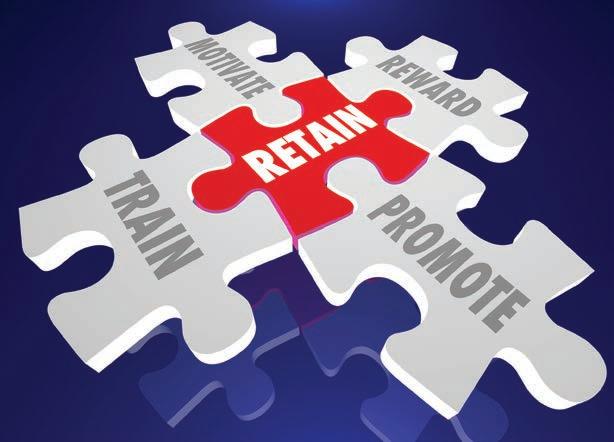
“If you’re looking to really move up two or three levels,” Gunderson says, “you may need to bring someone in from the outside so that you can cultivate people who are in your business. I can tell you that, when we promote from within, the tenure of those people lasts a lot longer than when we hire from the outside. Except for accounting, our top leadership has come through the ranks.”

Wischmann concurs: “We’ve hired for some upper-
“For a higher-level position in our stores and in our production, I almost always hire from within,” he says. “They can start off as a store employee and end up as a store manager. My general manager was a store employee, and he worked his way up. There are more specific-type jobs, however, where you need to go from the outside, such as an engineer or accountant.”
“I’ve done both, and both have pros and cons,” Scott says. “Hiring from within is usually my preference. I started in this business at the entry level and worked all the way up. Management and ownership apparently saw that in me, so I’m a big proponent of hiring from within. For the pros, someone from within knows the industry, and can usually understand what the next step and responsibilities are. The con is that their peers and co-workers might continue to see them as an equal as opposed to a person of authority.”
FROM CO-WORKERS TO LEADERS
When promoting from within, part of this period of adjustment is allowing team members who might have been peers with the new leader to get used to the new structure. Wischmann believes in being honest and open with new leaders about potential issues they may face.
“Training is No. 1 — teaching them basic supervisory skills and talking to them openly about the challenges they are going to face,” she says. “This means telling them they are going to be in a position where they are going to have to be upfront with someone whose work isn’t up to par.”
Wischmann believes the team needs to be included in the conversation, as well.
level positions outside of the company and we definitely have found it is much more difficult, and we’re much more likely to lose those people. It’s difficult to build their knowledge of the industry.”
This experience, Wischmann says, has led to Benzinger’s tending to promote current team members.
“The overarching philosophy is that we definitely promote from within first,” she says, “and there are three main reasons for that. First is the knowledge of the industry. It’s tough to find people coming in off the street who have already worked in dry cleaning. The people here already have that baseline knowledge.
“Second, they already have credibility with their coworkers. They know how difficult the work can be and they’ve proven themselves. Third, we know they have bought the culture — they wouldn’t have gotten that far and they wouldn’t be looked at for promotion if they weren’t able to demonstrate this idea of what we care about at Benzinger’s.”
Zengeler believes in promotions to keep good people with his company.
“It’s also being clear with people about what’s happened with the promotion,” she says, “and being transparent with the rest of the organization as to why the person was promoted, what their new role is going to be, and an acknowledgement that things are going to change. This new supervisor or manager-level person has the full support of the upper-level management and that they expect the same from others.”
Part of a successful transition, Scott believes, is choosing someone who has already taken on a leadership role — even if it has been unofficial.
“You want to choose someone within the company who is already respected by co-workers as a hard worker and a de facto leader in their area, anyway,” he says. “When you promote that person, the team says, ‘Oh, good for you! That’s awesome.’”
STRUGGLING LEADERS
The road isn’t always smooth when it comes to taking on a position with added responsibilities.






“I have seen people get overwhelmed, and that

8
November/December 2022 www.americandrycleaner.com
American Drycleaner,
(Photo: © iqoncept/Depositphotos)



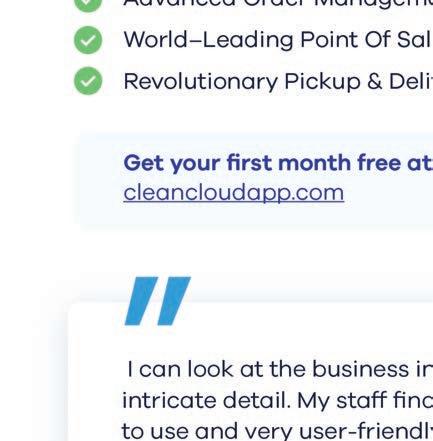







shows up in one of two ways,” Wischmann says. “They might feel like they have to do everything themselves, now that they are in a higher position. They feel that everything is on them instead of tapping into their team. They’re just operating at a frenetic pace and there’s no way they’re going to maintain it.
“The other direction they can go when they are overwhelmed is to shut down. Someone who was incredibly reliable, always picking up shifts, is suddenly calling off, not showing up or is often late. Both of these people were overwhelmed — they just handled it in a completely different way.”
When leadership sees someone showing signs of being overwhelmed, Wischmann warns that immediate action should be taken.
“You can help them prioritize,” she says. “Show them the difference between what’s urgent and what’s important. It could mean shifting a couple of their tasks to someone until they’re more comfortable, giving them a bit of breathing room. Hopefully, they can take those couple of tasks back, or perhaps the job description wasn’t exactly right, and they did have too much on their job description. You want to put them in a position to be successful, rather than setting them up for failure.”
Changes in personality are also a red flag, Gunderson says.
“When I see their temperament getting shorter, I’m going to sit down with that individual and try to have a casual 30- to 60-minute conversation. I try to take the topics off work, because they need a bit of a distraction. If we can have a conversation, and I have all their attention, that’s a very positive sign. When I can’t get their attention, when their mind is too distracted, I know they’re overloaded.”
SUCCESS STORIES


Some of the most rewarding experiences in a business owner’s career are seeing people who’ve they promoted thrive and achieve more than either the employee or the owner might have thought possible. Zengeler says he’s felt this satisfaction multiple times.
“It’s really my two top people,” he says. “One employee has been with us for 30-plus years, and she started by mending for us — she sewed on buttons, repaired seams, and work like that. She gradually worked her way up, and now she manages all the production employees and reports directly to me, and I listen to her and her advice. My other top person started off as a store employee, became an assistant manager, and then the manager of a store. Now he manages all my stores and my delivery routes.”
“The thing about natural leaders and people who are really ambitious,” Scott says, “is that, if you don’t feed that, they’ll find it somewhere else. I know that, if I have






a ‘rock star’ employee, and I don’t keep giving them more and keep challenging them, they’re going to get bored with the job and go somewhere else.”
Sometimes, those future leaders show initiative from the very beginning.
“About nine years ago, I called this employee when she applied for a job. She came in that same day for an interview, which was unusual, but she was eager to get a job. I hired her that same day, and she started the next day. She ended up working out, and worked her way through the ranks, moving up to the store management and then a store lead. She’s now the general manager.”
TAKING THE NEXT STEP
When it comes to setting people up for success when it comes to promotions and leadership, Scott believes in setting the proper example.
“It goes back to feeding someone’s ambition and keep keeping an eye on those who want to keep busy,” he says. “That’s how I was, but that’s just how I’m wired. So, when I see that in other people, I try to seize that, cultivate it and help it grow within the company. That’s how it’s worked for me, and it’s worked for many of my staff. It’s become part of the norm here now.”
Also, it’s important to understand that, no matter how good someone is at their position, it doesn’t mean that they are ready — or even want — to climb to the next step.
“Don’t make decisions too quickly — both for both yourself and for the employee,” Zengeler says. “Some people aren’t managers — they don’t know how to manage people and they don’t know how to communicate with people. Some people might be a great dry cleaner, but it doesn’t mean they can manage the plant.”
Gunderson believes that it’s critical to check in regularly with your team, not only to see who might be ready for more responsibility, but to show that the company’s leadership sees their true value.
“By understanding our team and having these conversations, it really gives us a leg up in treating each team member individually for their ‘care label,’ just like we do with garments,” he says. “It’s harder to find people’s care labels than it is on the garments, but it’s important.”
Wischmann believes that having a clear way forward will show the way forward for those wanting to rise to the management level.
“I think one of the best things that any company can do is take the time to get their organizational structure put down on paper so that people can see the pathway that they would have in moving up,” she says. “If people can’t see it, if they don’t know how the organization is even laid out, they would have no idea how to even begin to move forward.”
10 American Drycleaner, November/December 2022 www.americandrycleaner.com








































































Our Automation Systems will help you do more - with less! Are you short-handed? ReliableAffordableAvailable Simple design along with great customer service. Keep it simple! Provides the best return on investment. Made in the USA. Delivery available in as little as 2 weeks. 501-420-1682 garmentmanagement.com 247 EXPRESS Dry Clean at Your Convenience
Building a Route Business


Hitting the Road to Maintain a Relationship with Your Customers
 By Dave Davis, Editor
By Dave Davis, Editor
Successful dry cleaners know that besides the services they provide in cleaning a customer’s clothes, they offer two things: They free up their customers’ time, and they offer them convenience.

And, in an era where customers are increasingly demanding these two things from their service providers, many cleaners who have embraced a route system are finding they have an advantage over those who only offer in-store pickup and delivery.
Proper planning, staffing and expectations, however, must be put into place to reap the benefits of adding route services.
INCREASING DRIVE TIME
“When I first got into the industry 21 years ago, routes were mainly done by franchises,” says James Peuster, owner of 21st Century Dry Cleaners in Kansas City, Missouri. Peuster also founded The Route Pros, a consulting firm that assists dry cleaners in setting up routes and training staff. “They were really a minor focus for dry cleaners.”
Times have changed. “Most cleaners now have at least one van, and I believe that number is going to continue to rise,” he says. “After 2008, when the recession hit dry cleaners, they started to realize that opening stores was more costly — to grow their business, the best way was to go out and get business.”




The benefits, both for customer and cleaner, make route systems increasingly attractive, Peuster says.




“You can notice that, for the past 15 years, the entire world has started to go to delivery,” he says. “I fell in love with routes 21 years ago because I noticed that you could do the same amount of volume, if not even more, with a van than you could at a store.”
Having a properly operated route service is one of the quickest ways to

12
November/December 2022 www.americandrycleaner.com
American Drycleaner,
(Photo: © Pixelci/Depositphotos)
build up a customer base, Peuster says: “You can look at it as increasing your bottom line, because it’s getting more cost-effective to have a van out there than it is a store, or as a way to increase your top line is by finding a way to get new customers.”

Routes have come to make up the vast majority of business at Jason Loeb’s Sudsies Dry Cleaners & Laundry, based in Miami and Fort Lauderdale, Florida.
“Our goal, when they come to our retail boutiques, is that we drive them right to pickup and delivery,” says Loeb, Sudsies’ president. “We aim for about 10% retail and 90% pickup and delivery. Customers, when they go from retail into a pickup and delivery system, tend to use the services more often and become more loyal, so we want to get more people on that. We’re in the pickup and delivery business.”
Sudsies offers four storefronts, but currently has 36 vehicles on the road. “We started with one truck about 18 years ago,” Loeb says. “Our route system is constantly growing — it’s organic growth, which shows the proof of the system. Sudsies has never bought a competitor.”
Loeb has a different way of viewing his pickup and delivery offerings: “I don’t do routes. I do mobile stores. When you do mobile stores, it’s a different philosophy.”
Part of this philosophy is offering pickup and delivery on his customers’ timetable, and not from a pre-determined schedule.
“Our trucks go to the same area, the same time every day, Monday through Saturday, for consistency,” he says. “If a customer wants a pickup on Monday, I didn’t want to say, ‘We’re not in your neighborhood until Tuesday.’ Our theory is to provide a service to our customers when they want it, where they want it and how they want it.”
THE BENEFITS OF THE ROAD


Peuster believes the unique nature of the dry cleanerclient interaction makes route systems an attractive business model.
“Dry cleaning is one of the few industries where you both pick up and deliver,” he says. “The drycleaning consumer has to make two round trips to do business with you. So, the added value is that you are giving your customer the benefits of time and convenience.”


There’s also a visibility factor that routes can give to a cleaner’s company.






“Your van is a rolling billboard,” Peuster says, “so you not only promote your route, but you promote your stores as well. That’s advertising that the consumer is paying for by using your service.”
Because of this visibility, however, cleaners should make the effort to “dress” their vehicles for the occasion.
“If it looks cheap, then people think you are cheap,” Peuster says. “You don’t have to do a mega-wrap, but it is part of your marketing. We have a policy that we won’t train a driver unless there’s something on the van. You go around and you’re scouting for customers, and if you’re in an unmarked van, people are going to think you’re scouting for other reasons.”
Loeb makes sure each of his vehicles is the best brand ambassador it can be.
“Having the van wrapped is non-negotiable for us,” Loeb says. “It’s not just for advertising. The vans look cleaner, more organized and presentable. They are more recognizable, and it makes people feel good when the van pulls up at their house.”
Loeb has found that offering pickup and delivery can affect consumer behavior in the cleaner’s favor.
“The average piece (count) per order actually increases because they want to be ready for the next pickup or delivery,” he says. “It also creates loyalty — people will change a lot less. And, if they liked the service, that customer tends to become a referral source, as well.”
THE RIGHT PEOPLE IN PLACE
One of the biggest factors in route success is the staff an owner puts in place. For route customers, the driver is often the sole point of contact, and mistakes made here can hobble a cleaner’s efforts.
“I usually ask one simple question when it comes to hiring drivers: ‘Would you put that driver in charge of a store?’” Peuster says. “If you look at it as a store on wheels, you’re going to be putting somebody behind the wheel who’s going to make decisions that, a lot of times, you don’t know they make. You want to look for somebody who’s going to do more than just drive. A lot of times, we start with the customer service aspect. If they have a customer service background or mindset, those are the people who you can start with and build around.”
For Loeb, the very term “driver” doesn’t fit into his philosophy.
“All our valets — we don’t call them drivers — are responsible for communicating with the customers via email, text and phone calls,” he says. “Every day, about 10-15% of our valet’s time is spent driving, 50% I would say is marking in the clothes, and the rest is spent communicating with the customer.”
This puts the valet in charge of their own personal store, Loeb says.
www.americandrycleaner.com American Drycleaner, November/December 2022 13
“The ownership is on each valet, and they provide that experience. That relationship is created. The relationship is with Sudsies, but the communication is through the valet. It’s like they’re managing a store. It’s not a franchise, but it can almost be like a franchise model because they get a commission. They’re independently running their store on wheels.”
Because this is such a vital role for the business, valets don’t get behind the wheel without being properly trained.
“The valets take an 18-day online course, called Sudsies University, where they sit in the portal every day with a teacher,” Loeb says. “We’ve built it over a long period of time. We also do driver training, where we bring in a trainer who goes through hazards and the importance of driving safely. After that, they will go out with another driver and shadow them for a few days. Then, a manager will take them on a route and build an area for us to grow in. After about 12 weeks, they’re ready to go on the road on their own.”
Over the years, Loeb’s organization has found which qualities to look for when hiring someone for the road.
rut. Even some of the best long-term drivers have been in a position where they’ve caused the routes not to grow. It’s often not intentional, but without a route manager, your routes will get stuck.”
The trap owners often fall into, Peuster says, is trying to take on too much by themselves.
“We’ve seen this through the years — people will come to our booth and say, ‘Our routes never grow.’ I’ll ask them who their route manager is, and the owner will say, ‘I am.’ I’ll ask how much time they devote to it. ‘Five hours a week at the most.’ In order to build a healthy route system, you have to have a route manager.”
THE WHEELS AND THE ROUTE
The other major decisions that go into a route system are outlining the route and getting the right vehicles for the dry cleaner’s needs.
“It goes back to not wanting to treat the route like a part-time store — it’s a full-time store,” Peuster says. “So, you’ve got to define your territory and the days you’re going to do it. This is where your point-of-sale system comes in to help you with that.”
There will also be a bit of trial and error when first starting a route or expanding existing ones, he says.
“We usually say, ‘Fish where the fish are,’ and a lot of times you don’t know that until you get going on the route — you just have to be prepared to adjust accordingly,” he says. “It’ll shift in sometimes. You have to move it like chess pieces, and sometimes you have to go backwards to move forward again. That’s just part of any business.”
Loeb says that making existing routes more efficient is key for future growth.
“The type of people we look for are coachable, and who want to be well-established and serious,” he says. “We’ve found that ex-athletes work very well for us — people who went to college and played on the baseball field but didn’t go pro after they graduated. That’s the type of personality that wants to be coached but also wants independence.”
Peuster believes that there is one other position that’s key to growing a route business.

“Once you get past that first van, it is seriously time to have a route manager involved,” he says. “One of the most common things I hear is, ‘We can’t afford a route manager,’ and I usually tell them, ‘You can’t afford not to have a route manager.’
“Without accountability, motivation, and somebody spearheading the effort, your route drivers will get in a
“We use the example of bonsai trees,” Loeb says. “As a route grows, we trim it and the base gets stronger. The routes become stronger. Customer service gets better. Then, we break off a piece of it and then we make a new route from two or three existing routes. So, we are constantly making the area smaller, but giving better service as they become more dense.”
When it comes to selecting a vehicle, Peuster stresses that cleaners shouldn’t buy more than they need — but shouldn’t short-change the effort, either.
“Often, people want to get excited about starting a route, and they’ll buy a huge Mercedes-Benz Sprinter van,” he says. “I usually tell people you’ll never really fill up your first van — usually, you run out of time before you run out of space. So, you can start off with the smaller vans — even the Dodge Caravans and the Toyota Sienna can become a good starter van.”
Once the route system is established, cleaners can ramp up their efforts.
(Continued on page 26) 14 American Drycleaner, November/December 2022 www.americandrycleaner.com
(alphaspirit/Depositphotos)
CHANGE IS INEVITABLE SUCCESS IS OPTIONAL
GET
SMRT
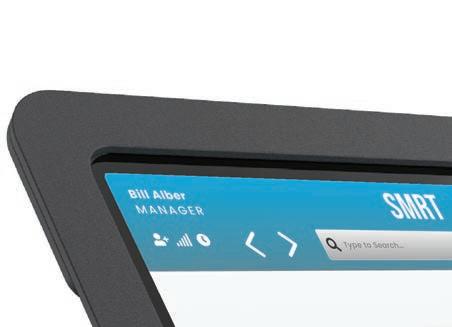






we
to improve your
you
“SMRT IS VERY FAST TO LEARN. IT’S ALREADY STREAMLINING OUR PROCESSES AND WE’VE ONLY BEEN USING IT FOR FOUR DAYS. SUPER EXCITED TO HAVE IT.” KIMBERLY B. SMRT SYSTEMS | 1017 MAIN CAMPUS DRIVE RALEIGH, NC 27606 “IF YOU ALWAYS DO WHAT YOU’VE ALWAYS DONE, YOU’LL ALWAYS GET WHAT YOU’VE ALWAYS GOT.”
At SMRT
never stop innovating
business. We are fiercely committed to providing the tools
need to be mobile, forward-looking, and proactive. (And still get a good night’s sleep). HENRY FORD
PRODUCTIONREPORTS
Upload pictures, track deliveries, and submit order status updates from anywhere, at any time.
VISIBILITY
Root out employee theft and increase accountability through machine learning and cash box security.
SMRT generates reports for every metric of your business. Access analytics 24/7.
SECURITY
Keep your data safe with industry-leading security encryption, threat monitoring, and detection.
MARKETING
Powerful communication tools and Interactive technology effortlessly combine innovation with quality customer service.
CUSTOMER
Upload pictures, track deliveries, and submit order status updates from anywhere, at any time.


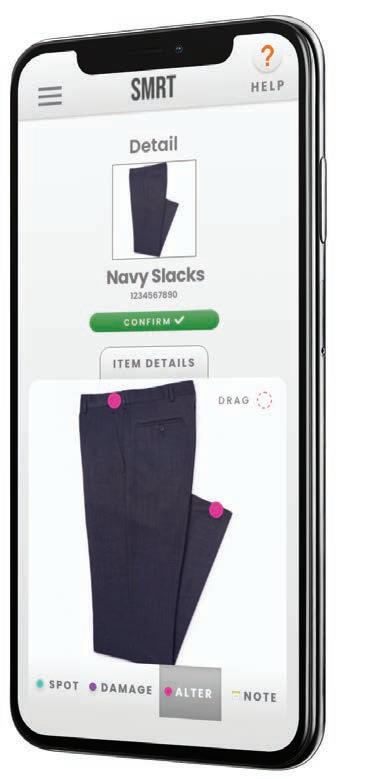

| WWW.SMRTSYSTEMS.COM YOUR CUSTOMER ON SMRT
(415) 612-9885
PROFESSIONAL POWERFUL INTEGRATED PEER-DRIVEN SOCIALLY PROOF GROWTH ACCELERATOR INNOVATIVE POWER MARKETING GET SMRT WE ARE PROFESSIONAL POWERFUL PEER-DRIVEN MARKETING FOR YOUR BUSINESS CHANGE IS INEVITABLE SUCCESS IS OPTIONAL GET SMRT CHANGE IS INEVITABLE SUCCESS IS OPTIONAL GET SMRT CHANGE IS INEVITABLE SUCCESS IS OPTIONAL GET SMRT CHANGE IS INEVITABLE SUCCESS IS OPTIONAL GET SMRT CHANGE IS INEVITABLE SUCCESS IS OPTIONAL GET SMRT CHANGE IS INEVITABLE SUCCESS IS OPTIONAL GET SMRT CHANGE IS INEVITABLE SUCCESS IS OPTIONAL GET SMRT CHANGE IS INEVITABLE SUCCESS IS OPTIONAL GET SMRT CHANGE IS INEVITABLE SUCCESS IS OPTIONAL GET SMRT CHANGE IS INEVITABLE SUCCESS IS OPTIONAL GET SMRT CHANGE IS INEVITABLE SUCCESS IS OPTIONAL GET SMRT CHANGE IS INEVITABLE SUCCESS IS OPTIONAL GET SMRT
An eternal question for the owner of every smallto mid-sized company — including dry cleaners — is how to get more business through the door. Often, marketing efforts go toward gaining new customers, but many dry cleaners have the tools available to retain an even more valuable group: existing customers.
This was the message of Norman Way, vice president of Richmond, Virginia-based Puritan Cleaners, during his session, “Marketing Out of Your POS.” Way presented during this year’s Clean Show in Atlanta.
THE STIGMA OF ‘SELLING’
“There are a lot of different definitions you could put with the word ‘marketing,’” Way says. “Most of them are about going out and selling a product to a new customer. But, as far as I know, the statistics have never changed — It costs about five times more to acquire a new client than to retain an existing one.”
Part of the solution to successful marketing is to get over the negative connotations about the word “sales,” be cause sales is part of marketing and, if done right, can ac tually be of service to the customer, rather than a nuisance.
“We are all in sales,” Way says. “Salespeople get a bad rap. If we can find ways to help people out, they will appreciate our communications. Being in sales doesn’t


Marketing Out of Your Point-of-Sale System Simple hits — not home runs — will win your customers’ business
www.americandrycleaner.com American Drycleaner, November/December 2022 19
By Dave Davis, Editor
(Photo:© telesh/Depositphotos)
(Photo: © AndreyPopov /Depositphotos)
mean you have to be pushy — it’s just being helpful.”
During his presentation, Way pointed out the various methods dry cleaners have available to them for marketing, including direct mail, email, coupons, customer referrals and customer rewards.
“So, which one is the silver bullet?” Way asked. “There isn’t one, so we need to be eclectic. I could not be more proud of my team. People come to me and ask, ‘How do you get (these results)?’ The truth is that there’s not one thing that we do. It’s 100 little things — add something here and add something there. It’s helped us to grow, and we’re seeing good success.”
WHAT WORKS FOR YOU?
The search for the mythical “perfect” solution that someone else is using keeps many dry cleaners from finding the right fit for their own situation, Way says. And, while the data in a cleaner’s point-of-sale (POS) system might hold the answer for them, it could require some effort to tease out that solution.
“The responsibility comes back on us,” Way says. “One thing that I’ve discovered is that none of the pointof-sale systems have the report that you want — because they don’t have the one I want. We’re all individuals. But the data is there, and we can make up the report if we know our specific needs. The report that works for a cleaner in Tampa may not be exactly the report that I’m looking for. But the data is there. Today’s point-of-sale system is not your grandfather’s cash register.”
If a cleaner gets frustrated when looking for the most valuable data for their particular store, Way suggests keeping the acronym PICNIC in mind: “‘Problem in Chair, Not in Computer’ — we’ve got to take a look at ourselves and take responsibility to find the answers.”
GETTING ON BASE
Way noted that many business owners are looking for a one-hit massive success, instead of taking the longterm view.
“Most of us spend our time trying to hit home runs,” he says. “But little things add up to big things. You don’t have to be a huge baseball fan to understand that you can’t go to second base without getting to first base. And usually, it’s just somebody pushing the next person around to get to home plate and score.”

The 2011 movie Moneyball, starring Brad Pitt, offers a great example of this type of thinking, Way says. The
movie focuses on the efforts of Oakland A’s General Manager Billy Beane.
“They went to the World Series with the third lowest budget in Major League Baseball,” Way says, “because instead of trying to spend a budget for people to try to hit a home run, they found somebody that could get on base one at a time. They went to the World Series — they lost to the Dodgers with a budget of only $28 million. That may sound like a lot to you. But the Dodgers spent $107 million a year.”
Getting on base, in the case of dry cleaners, means finding the small, everyday actions that produce results, and that means getting information from your customers so that the POS system can produce valuable data.
GARBAGE IN, GARBAGE OUT
“In his book, Business @ the Speed of Thought, Bill Gates writes, ‘How you manage information will determine whether you win or lose,’” Way says. “Can’t you Google anything in the world? Why aren’t we ruling the world? When it comes to information, having it is not the prize. It’s using it that gets you the prize.”
Way offers several steps that his team has found useful in getting actionable information:
Obtaining Client Data has to be the Norm — “I remember way back when we didn’t have anything but the first initial, last name and a phone number,” Way says. Knowing he needed better data, Way’s team had to increase its efforts. “We started doing contests, where you had to get their name and their email. And, in the two weeks we had that contest, we got thousands of them. So, let’s make sure that we’re pressing forward and that every person is trained on how to get an email address.”
Make It a Conversation Versus Questions — “I wouldn’t go over and say, ‘Hello, may I get your email? May I get your birthday?’” Way says. “Instead, I might ask for your birthday — ‘not the year, just the month and day — because we’d like to send you a little something on your birthday. What email could I send that to?’ Now I’ve given a reason for something, instead of just asking for the thing.”
Share the “Why” with Your Team — In order to get consistent results, a cleaner’s team needs to know why it’s important. “They need to understand that what they are doing is helping to make their job easier with customers,” Way says.
Proper Capitalization Matters — Customers don’t enjoy feeling like they are being shouted at: “This one’s a little pet peeve of mine,” he says. “If the caps lock is stuck on and you send a greeting email, it’s going to come over, ‘Dear SALLY,’ with all caps. These are little details that you might consider.”
20 American Drycleaner, November/December 2022 www.americandrycleaner.com


We Clean Garments; We Also Clean Our Data — As customers come and go, it’s important to weed out clients who are no longer active.
“At some point,” Way says, “you’ve got to get rid of some of the trash that’s in your system so that you’re marketing to good people.”
Emails are Still No. 1 — While new technology and methods of communication are always advancing, email is still one of the most valuable pieces of customer data to collect. “These days, people tend to give their cell phone number, so you can send them a text,” Way says, “but make sure to ask for their email, as well.”
Verify Information — Occasionally, Way says, you need to make a pass to verify the information you have. While the customer might still be active, their data may be out of date. “Sally Smith gets married, and she’s now Sally Jones,” he says. “Sally Jones moves, and her address changes. So have a process in your system to occasionally verify the information.”
PUTTING INFORMATION INTO PLAY

Way illustrated several ways to put collected data into marketing efforts to keep customers once they’ve done business with your company. The first technique is to have a standardized method of welcoming new customers.
“Everyone wants to be welcomed,” he says, noting that this starts with the customer’s interaction with the counter staff. “Make sure that your personal experience is good, because that will trump anything you promise in your email.”
A valuable reason to have a well-thought-out and stan dardized welcoming protocol is that your company speaks with one voice: “Repetition breeds familiarity. Whatever you’re saying at the counter should be the repetition that you’re putting in your emails and other marketing.”
Once the new customer is in the system, it’s important to make sure the lines of communication are open by sending an email.
“Be welcoming, but don’t be pushy,” Way says. “The customer who comes in today gets an email back tomorrow that welcomes them and lets them know that they’re appreciated.”
Way’s company has a standard email for that first interaction that they’ve fine-tuned over the years.
“In the welcome email that comes from Puritan, it says it’s on behalf of our entire team — we’re not trying to make it specifically about an individual,” he says. “We talk about things that we do, and we’ve got a couple of links to go
with that. We’ve embedded a welcome YouTube video to go with it, as well. We tell them, ‘We are here for you and welcome any questions — you can email us. And, by the way, here’s all the fields that we captured for you, and we want to make sure that those are all correct.’”
Also, Way warns about getting too verbose in email messages: “Be friendly, but get to the point. People have a ton of things to read.”
LATER IN THE GAME
As the relationship progresses, using your POS system to keep track of a customer’s activities can be key to keeping them engaged with your business. For instance, when a customer hasn’t been in for a certain period, or if their pattern changes, modern POS systems can flag that customer for special attention.
“You can offer a sale,” Way says. “You have those days when business is down, and you have the data of your cus tomers. Why not send them and something that can direct them to your store? And most sales don’t have to be 50% off — just giving $3 off something gives them an opportu nity to come in or a reason to be there on slower days.”
Other reasons to email, Way says, include birthdays and anniversaries.
“Our subject line is, ‘Happy Wrinkle-Free Birthday,’ because everybody gets a little wrinkled when they get older,” he says. “We give a 21% discount. I love odd numbers, because even numbers just kind of blend in, and who in here wouldn’t like to be 21 again?”
WORKING ON THE FUNDAMENTALS
Way offers the following tips to make sure your email game is as effective as possible:
Use an Alias Email When You’re Marketing from Your POS System — “Don’t use an individual’s email,” Way warns. “I know that Sarah is doing a great job for me, but I don’t want Sarah’s email because, at some point, Sarah may not be the person that’s doing that. Make sure you’ve got something that is generic, so that one person doesn’t lock you out of it.”
Remember the Opt-in Process — “You’ve got the data in your system,” Way says. “You don’t want to send Shawn 50 emails in a month. We might be sending out 50 emails, but Shawn is only qualified for three of those. Manage the data.”
Review the Outgoing Communication — Time spent proofreading is never wasted, he believes: “When you’re sending emails, make sure that you’re not the only one looking at it. Get somebody else to look over it.”
Delegate — Use the talents of the people around you: “You know that person at the store who’s always looking at their phone, or always on their email? They might be a
22 American Drycleaner, November/December 2022 www.americandrycleaner.com

great person who you can delegate to do some of these tasks.”




Have Algorithms to Avoid Over Emailing —


“You need some safety check,” Way says. “I don’t want to send out ‘ask for reviews’ to all my customers this week. And it can be as simple as this: Put on the calendar that this week, I’m going to market to the people whose last name starts with A or B. Next week, we’ll market to C and D. What will happen is you will not be overloading your customers with emails. You’ve used the data that’s in your point-of-sale system.”



BULKING UP YOUR TEXTING SKILLS


Another valuable tool in a dry cleaner’s marketing arsenal is texting — if used properly.
“Emails are definitely less invasive than texts,” Way says. “Texts should be communicative, rather than strictly for marketing. I’ve made the mistake of sending texts out about the ‘Wednesday Sale,’ and if they haven’t opted-in for that, people will delete you. If they delete you, none of your other text messages can get out. So be very mindful of that.”
Sending out information the customer wants, however, is a great way to keep the communications line active and appreciated, whether it is about an update on their cleaning or news that they need.

“In Richmond, Virginia, if we get a quarter-inch of snow, the city is shut down,” Way says. “We can send a message out saying, ‘It’s snowing — we’re not going to be open today and we are not going to be out.’ Because it is about the service of their items, we don’t get push back from that. We had a situation where the boiler was down, and we knew we weren’t going to get clothes back. The data is in the system. We got with the cus-
tomer and said, ‘Due to unforeseeable circumstances, our boiler is down, and we’re not going to be able to get the clothes back to you on time.’”


With the boiler message, Way’s team accomplished several goals: “First, we were helpful. Who wants to make a trip to the cleaner for nothing? Second, we were communicative. And third, we had an opportunity to list our home delivery or other services. It was a reason to get in front of the customer.”
To set up an effective texting network, Way says that a little forethought can go a long way.
“When it comes to text messages, make things easy for people,” he says. “Most of us put in a text message: ‘XYZ Cleaners appreciates you.’ Make it ‘XYZ.com.’ It’s a tiny thing — it takes you three additional characters — but that also makes it a hyperlink. That person can click right through to where you want them to go.”
Keeping people’s schedules in mind can also make texts a lot more valuable.
“When you’re sending a message asking for an action, make sure you send it at a time that matches the action opportunity,” Way says. “If you’re texting Ken to put a bag out for pickup, don’t text him at 3 o’clock in the afternoon when he’s at work, when he can’t put the bag out and will forget by the time he gets home. You’ve got the information in your point-of-sale system.”
PUTTING YOUR GAME PLAN IN PLACE


Because there’s no magic bullet that will automatically give a dry cleaner huge success in marketing, Way believes that owners should see their efforts as a process.
“Pick an item, pick two items, and go back and start implementing those today,” he says. “Don’t make it a daunting task agenda, where you think, ‘How in the world am I going to do this?’ We think we need to go over the mountain to get there. You can take one step, just like Billy Beane, and get on base. That’s the step that we need to take.”

24
November/December 2022 www.americandrycleaner.com
American Drycleaner,
There’s more: We’re just two members of NIE’s team of experts. NIE has been handling fabricare insurance since 1915!

“Get yourself what we’d call a route developer van and, once you get a second van, you can still use a smaller van for one route and a bigger van for the other. That’s always the key for growth — to get to a second to a third to a fourth van.”
For Loeb, the decision to buy rather than to lease vehicles was a simple one.
“My overall philosophy was always to buy them because I control the destination of that vehicle,” he says. “When you turn in a vehicle, you are responsible for worn tires and that kind of thing. You have to fix it to give the van back to somebody. I just sell the van as is. I maintain my fleet very well, so I don’t have any vehicles that aren’t correct. It just gives me the control of doing what they want to do. And I change our vehicles about 10 per year. We’re constantly changing — I always want newer and better for safety.”
MISTAKES THAT CAN LEAD TO A WRECK

A lot of elements go into creating an effective route system. Peuster believes the biggest error some cleaners make comes at the very beginning of the process.
“Probably the most common mistake is not being all in with it,” he says. “They try to share their van and driver

with other duties, and the commitment is not there. The entire company has to buy in — including the production staff, because it can disrupt them. It kind of changes the way that you tag and assemble.”
This “one foot in, one foot out” mindset can make it difficult to see progress, Peuster says.
“When treating routes like an extra service that cleaners kind of do,” he says, “the routes inevitably don’t grow at a pace that the cleaners need them to, so they don’t think that routes can grow at all.”


Loeb agrees: “Pickup and delivery is holistic — it’s not by pieces. If one thing doesn’t work, it all doesn’t work. The analogy that I use with my team is that, if you have a vehicle with three brand-new tires, but one tire is old and flat, that vehicle doesn’t move. Everyone has to be pulling in the same direction.”
Ultimately, as with all things in a customer service industry like dry cleaning, success hinges on building personal connections between the business and the consumer.
“Dry cleaning is a relationship-based business,” Peuster says. “You should always be promoting your route at the counter, you should always be converting it, because there’s already a relationship there. If you don’t put them on a route, somebody will.”
26 American Drycleaner, November/December 2022 www.americandrycleaner.com (Continued from page 14) For Contactless Automation at the Front Counter, Plant and Routes Toll Free 877.906.1818 www.ezpi.us A Proven Industry Leader & Recommended by the Consultants You Trust. The Ultimate Heat Seal Machine Saves You Money, Time and Labor •Presses and Solutions for all Budgets •Best and Free Technical Support Forever •Proudly Made in the USA •We are the Only Manufacturer of TÜV SÜD Safety Certified Presses; Includes OSHA and UL Safety Standards •Low Cost of Ownership – Very Reliable, Easy to Fix and Upgradeable •Pre-printed Sequentially Numbered Heat Seal Barcode Labels in One Day

















It’s not just print anymore. Whenever. Wherever. American Drycleaner can now be viewed on your mobile devices. Stay on top of the latest industry news and updates. www.american drycleaner.com ® NOV/DEC 2022 © Copyright 2022 American Trade Magazines All rights reserved. ■ BUILDING A ROUTE BUSINESS ■ MARKETING OUT OF YOUR POINT-OF-SALE SYSTEM Promoting and Training Employees Finding Those Ready for the Next Step
The Drycleaning & Laundry Institute (DLI) recently swore in its 20222023 Board of Directors at its Summer 2022 Board Meeting in Atlanta.
Included are, Front Row (left to right): Kyle Nesbit, Treasurer; Kathy Benzinger. District 1 Director & President-Elect; Jeff Schwegmann II, CGCP, President; and Bobby Patel, Chair. Second Row (l-r): Norman Way, Hilary Taylor, Dru Shields, Rhonda Eysel, Mark Albrecht and Dan ny Bahlman. Back Row (l-r): Tom Ustanik, Toran Brown, Allan Cripe, Ed Longanecker, John Mertes and Don Holecek. Not Pictured: Joe Blaha, Chris Edwards, Larry Fish and Ray Kroner. (Photo: DLI)
DLI Swears In 2022-23
Board of Directors
Leadership selected from eight regions around U.S. LAUREL, Md. — The Drycleaning & Laundry In stitute (DLI) recently swore in its 2022-2023 Board of Directors at its Summer 2022 Board Meeting in Atlanta.
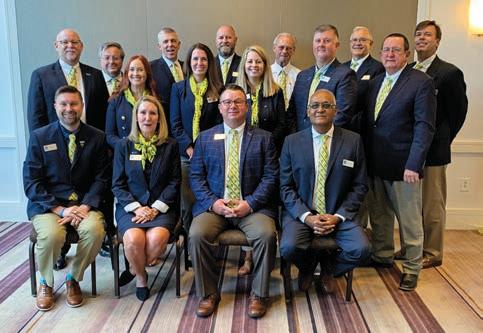
DLI’s Board is comprised of fabricare business own ers and operators from eight regions around the U.S., an Executive Committee, and Allied Trades representatives. All Board members, DLI says in its announcement, vol unteer their time and energy to guide the Institute toward providing the best benefit to its membership.
THE
2022-2023
DLI BOARD OF DIRECTORS:
Chair: Bobby Patel, Kona Cleaners, Costa Mesa, Cali fornia
President: Jeff Schwegmann II, CGCP, Sunshine Clean ers, Cold Spring, Kentucky
President-Elect & District 1 Director: Kathy Benz inger, Benzinger’s Dry Cleaning, Hamburg, New York
Treasurer: Kyle Nesbit, Tide Cleaners, Spring, Texas
District 2 Director: Norman Way, Puritan Cleaners, Richmond, Virginia
District 3 Director: Don Holecek, Crown Cleaners, Knoxville, Tennessee
District 4 Director: Ray Kroner, Kroner Dry Cleaners, Cincinatti, Ohio
District 5 Director: Ed Longanecker, Iris City Cleaners, Mount Pleasant, Iowa
District 6 Director: Danny Bahlman, Bahlman Clean ers, San Angelo, Texas
District 7 Director: Hilary Taylor, Continental Clean ers, Salt Lake City, Utah
District 8 Director: Toran Brown, Rytina Fine Cleaners & Launderers, Sacramento, California
Allied Trades Director: Mark Albrecht, The Route Pros, Woodbury, New Jersey
DISTRICT COMMITTEE MEMBERS
DLI’s Board of Directors includes District Commit tee Members (DCMs) who volunteer to share their per spectives and experiences with DLI’s Board. District Committee Member insights help the Board evaluate situations and make better-informed decisions.
District 1 DCM: Larry Fish, Kingston Cleaners, Wake field, Rhode Island
District 2 DCM: Chris Edwards, A Cleaner World, High Point, North Carolina
District 3 DCM: Rhonda Eysel, Master Kleen Dry Cleaners, Columbus, Georgia
District 4 DCM: John Mertes, Ziker Cleaners, Inc., Mishawaka, Indiana
District 5 DCM: Thomas J. Ustanik, Jr., Lansing Clean ers, Inc., Lansing, Illinois
District 6 DCM: Allan Cripe, Valet Cleaners & Coin Laundry, Temple, Texas
District 7 DCM: Joe Blaha, GreenEarth Cleaning, Kan sas City, Missouri
District 8 DCM: This position is currently unoccupied Allied Trades DCM: Dru Shields, Enviroforensics, In dianapolis, Indiana
WSDLA to Merge with SDA
Expanded SDA will represent 10 states and 240 members
LEANDER, Tx. — The Western States Drycleaners & Launderers Association (WSDLA) and Southwest Drycleaners Association (SDA) recently announced their intention to merge operations.
28 American Drycleaner, November/December 2022 www.americandrycleaner.com AROUND THE INDUSTRY
“It is with great excitement that I’m able to announce a new union between the Western States Drycleaners & Launderers Association (WSDLA) and Southwest Dry cleaners Association (SDA),” said SDA President Kyle Nesbit.

After getting input from both membership bases, the WSDLA and SDA board of directors met in August to discuss the potential merger. It was determined, either in writing or with a vote cast verbally during the meeting, that three-fourths of both associations’ boards were in favor of the merger.

On Jan. 1, 2023, the Southwest Drycleaners Associa tion (SDA) will become a 10-state “Super Association” serving professional drycleaners of Arizona, Arkansas, Kansas, Louisiana, Mississippi, Missouri, Nevada, New Mexico, Oklahoma and Texas and will boast a member ship of more than 240 cleaning professionals.
In the merger announcement, the associations noted that new Arizona and Nevada members can expect three in-person membership meetings with education oppor tunities and networking events that will rotate among all
the member states. All members will also have free registration to the Cleaners Show case 2023, sched uled for April 28-30 in Irving, TX. This will be the only regional equipment trade show scheduled in the U.S. for 2023. Members can also take advantage of benefits from the Drycleaning & Laun dry Institute (DLI), such as the peer-to-peer Zoom calls, webinars and the DLI School of Drycleaning.
As customary when adding new states, the SDA is extending seven board of director seats for cleaner mem bers to WSDLA so the new states will be represented, especially during this transition. Cleaner members in Arizona or Nevada who would like to serve on the board are asked to get in contact with the SDA.
www.americandrycleaner.com American Drycleaner, November/December 2022 29
You Ca n Still Counton Pariser Diligently serving our dry cleaning customers’ dry- and wet-side chemical requirements for 50 years — without interruption! Contact your local Pariser representative or distributor for samp les of Pariser products. LAUN DRY CITRAZYME One-shot, powdered laundry detergent containing enzymes,oxygen bleach, and citrus degreaser. NAPTHOL-T Powdered laundry detergent formulated to clean dark-colored shirts in cold water temperatures. MEGA BRYTE One-shot, powdered laundry detergent that contains non-phosphate water conditioners. CITRASOL Concentrated citrus-based liquid degreaser additive for oil and grease stain removal. STAND UP Advanced synthetic liquid starch for shirts and denim designed to provide WET-CLEANING AQUAVELVET One-shot wetcleaning detergent with stain removers and conditioners. SHOT-SPOT Versatile, all-purpose stain remover. ACTIVATE Color-safe oxygen bleaching agent blend containing a lowtemperature catalyst. HYDROCON Fabricconditioner and retexturizing agent with optical brightener. LS-100 Synthetic liquid sizing and natural corn starch blend. 50 YEARS OF CLEANING SOLUTIONS 91 Michigan Avenue Paters on, NJ 07 50 3 ( 80 0) 37 0-SOAP (973) 569-9090 info@ pariser.net ww w.pariser.net
a August ad, the closing date is July 1st.








30 American Drycleaner, November/December 2022 www.americandrycleaner.com
SYSTEMS
TRUCKS
BASKETS
PAYMENT FOR CLASSIFIED ADS: Must
Paying too much for spotters? Buy 3 Get 1 Free! Buy online and save. DryCleanerSoap.com CHEMICALS PLANTS FOR SALE Patriot Business Advisors Specializing in Selling Drycleaners in NJ, PA, DE & MD. Sell or Buy Drycleaners. WE HAVE BUYERS!!! Call Liliane at 267-391-7642 DIFFICULT TIME SALE! $1,000.00 > > > $850.00/Refurbished, $2,000.00 > > > $1,750.00/New System Includes Computer, Touch Monitor, Invoice Printer. All Name Brands & One Year Warranty! www.westerndccomputer.com 773-878-0150, westernk@msn.com AMERICANDRYCLEANER For more classifieds, visit: www. .com Sell your stuff at American Drycleaner online classifieds www.americandrycleaner.com
COMPUTER
CARTS,
&
2022 RATES: One- to five-time rate: $2.20 per word, boldface $2.30 per word. Minimum charge: $25.00 per ad. Call or write for our three- and 11-time rates. If box number is used, add cost of 5 words. Display classified rates are available on request. All major credit cards are accepted. DEADLINE: Ads must be received by the 1st of the preceding month. For example, for
accompany order.
POSITIONS AVAILABLE
Position available in the Caribbean on the island of St. Kitts. Looking for a experienced laundry and drycleaning professional to train and supervise staff for a minimum of six months. Send inquiry to Proclean.ltd@noisiv.ca www.AmericanDrycleaner.com
International . . . . . . . . . .26
Garment Management Systems. . . . .11





Iowa Techniques . . . . . . . . . . . . . . . . .5

Luetzow Industries. . . . . . . . . . . . . . .31
Maverick Drycleaners . . . . . . . . . . . .24










Newhouse Specialty Co. . . . . . . . . . .31







Contact Don Feinstein • 312-361-1682


NIE Insurance . . . . . . . . . . . . . . . . . .25
Pariser Industries . . . . . . . . . . . . . . . .29

Parker Boiler Co.. . . . . . . . . . . . . . IBC
Patriot Business Advisors . . . . . . . . .30
Realstar . . . . . . . . . . . . . . . . . . . . . . .23

Royal Basket Trucks . . . . . . . . . . . . .30

Sankosha USA. . . . . . . . . . . . . . . . .BC

SMRT Systems . . . . . . . . . . . . . .15-18
SPOT Business Systems . . . . . . . . IFC
Union Drycleaning Products . . . . . . .21

2022 RATES: One- to five-time rate: $2.20 per word, boldface $2.30 per word. Minimum charge: $25.00 per ad. Call or write for our three- and 11-time rates. If box number is used, add cost of 5 words. Display classified rates are available on request. All major credit cards are accepted.
Ads must be received by the 1st of the preceding month. For example, for a June ad, the closing date is May 1st.
PAYMENT FOR CLASSIFIED ADS: Must accompany order. www.americandrycleaner.com American Drycleaner, November/December 2022 31 Poly Made for: Sankosha Metalprogetti Unipress Save 30% on Poly! Heat Seal Poly Reliable & Affordable Reduce Waste - Cut out the Middle Man - Build Profit Any Size or Gauge, Clear or Branded 10 Roll SPECIAL - 32 Roll Pallet Discount - 56 Roll Best Value 800-568-7768 CLEANERSUPPLY.COM WE SHIP FAST American Dry Cleaner.indd 3 8/25/20 1:12 PM SUPPLIES SUPPLIES SUPPLIES A.L. Wilson Chemical Co. . . . . . . . . .1 CleanCloud-Tailor Made London . . . .9 Cleaner Business Systems . . . . . . . . . .3 Cleaner’s Supply . . . . . . . . . . . . . . . .31 EzProducts
DEADLINE:
WIRE
THE
The latest news, straight to your inbox, 2X a week
000+
Visitors
Annual
Advertise Today
Rulings, Chartings and Decisions
10 YEARS AGO. Making a Decision —
Nearly 62% of the cleaners polled in the American Drycleaner Wire survey in October 2012 said they would be supporting the Republican ticket of Mitt Romney and his running mate, Paul Ryan. About 24% were supporting Democratic incumbents Barack Obama and Joe Biden, and the remaining 14.3% were not sure at the time. According to 65% of respondents, the state of the economy would be the most influential factor in helping them decide how they would cast their vote. Tied for second, at 15% each, were debt management and Social Security/Medicare. The remaining 5% saw healthcare as being the most influential in their decision.
25 YEARS AGO. 60% of the Way —
As of Nov. 18, 1997, there were 60 cosponsors (45 Republicans and 15 Democrats) of Small Business Remediation Act — also known as the Barton Bill in honor of its author, Rep. Joe Barton (R-TX). The legislation that would protect drycleaners when it came to environmental cleanup. “With help from the entire industry, we feel it is do-able to have 100 cosponsors by the end of this year,” reported Baise & Miller, the law firm assisting in the efforts to pass the bill. Industry leaders said at Clean Show ’97 that they had a target of 100 cosponsors of the bill by the end of the year.


50 YEARS AGO. New Pay-Price Ruling — Companies that gave raises to low-paid workers got a break from the Price Commission, reported the Research Institute of America (RIA). A special ruling would let those companies pass along the dollar cost in their pricing, with no top limit. The new rule was made necessary, the report stated, by the Pay Board’s decontrol of all wages below $2.75 an hour. The raises given as a result were expected to often exceed the 5.5% that could be counted on as “allowable costs,” the RIA said.
“Though the Price Commission announcement refers only to the $2.75 low-pay rate,” the RIA said, “it’s

clear that the new rule will also cover the raises given to meet any new minimum wage law.”
85 YEARS AGO. Charting Progress

An Inspection Chart System, developed by the Indianapolis-based North Side Laundry, was quickly adopted by more than 100 cleaners throughout the country after being put on the market. The system was designed to ensure a careful checking of all garments, as well as providing the cleaner with a strong merchandising idea, designed to increase sales.
— Compiled by Dave Davis, Editor
32 American Drycleaner, November/December 2022 www.americandrycleaner.com WRINKLE IN TIME
Productshaveproventolastupto10timeslongerthan similarproductioninthisindustryandapplications.


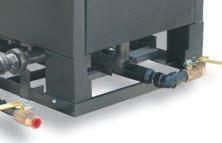


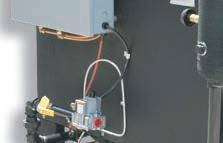


Wehavemanyinstallationswithsteamboilersthathave beeninserviceforover50-years,10hoursperday.
Thematerialsusedincurrentproductsarebetterthanthe materialsused50yearsago.Forexample,inthe80’s, steam drumwentfrom3/8”thickto1/2”thick.
Ourheatingsurfaceoramountofsteelabsorbingenergy has alwaysbeen2to3timesthatofotherunits(upto6sf ofheatingsurface per boilerhorsepower,whichsomeunits arecloserto2sfofsteel per hp,andsomeeven1sf).


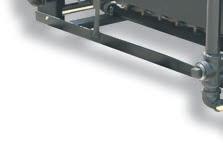


Wehavethebestdistributedflameormostevensurface areaevenlydistributedundertheentirepressurevessel. It isalsoamodulardesign,so it canberepairedeasily.
Tube materials were upgraded from seamlessrated pipe to seamlessrated tubing. Material is not only thicker, ends up .133 wall, but is annealed which give the surface on both sides a mill scale coating that is more resistant to corrosion and is long lasting from testing.
LowestCostofOwnership?
COMPROMISE FOR QUALITY OR SAFETY
www.parkerboiler.com
NEVERA
5930 Bandini Blvd. Los Angeles, CA 90040 Tel: 323-727-9800
lowestinitialcost,but wehavelowestcostofownershipbecause:
Wemayneverbethe


SankoshaUSAInc. TOLLFREE:(888)427-9120•TEL:(847)427-9120• www.sankosha-inc.com BecomeapartoftheSankoshafamily Andyougetthehigheststandardofserviceplus PeaceofMind
















































































































































 By Dave Davis, Editor
By Dave Davis, Editor



































































































